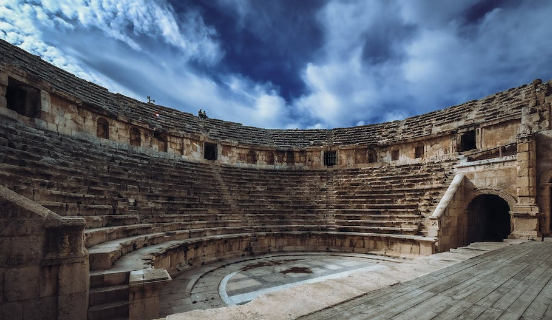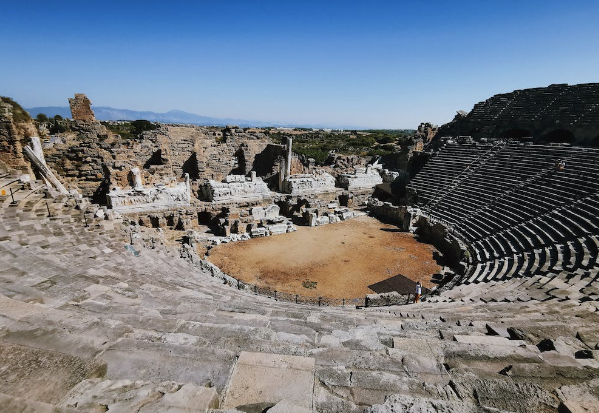Table Of Contents
- 1 Unveiling the Art of Clay Coil Building: A Guide for All Levels
- 1.1 What is Clay Coil Building?
- 1.2 Benefits of Clay Coil Building:
- 1.3 Essential Tools and Materials:
- 1.4 Session 2: Mastering the Fundamentals of Clay Coil Building
- 1.5 1. Preparing the Clay:
- 1.6 2. Rolling Coils:
- 1.7 3. Scoring and Slipping:
- 1.8 4. Attaching Coils:
- 1.9 5. Building Walls and Forms:
- 1.10 6. Joining Coils at Angles:
- 1.11 7. Reinforcing and Supporting:
- 1.12 8. Finishing Touches:
- 1.13 Session 3: Elevate Your Clay Coil Building Skills: Advanced Techniques and Tips
- 1.14 1. Creating Unique Surface Textures:
- 1.15 2. Enhancing Details and Features:
- 1.16 3. Assembling Complex Forms:
- 1.17 4. Enhancing Functional Pottery:
- 1.18 5. Pushing the Limits of Clay Coil Building:
- 1.19 Session 4: Sharing Your Clay Coil Building Creations and Beyond
- 1.20 1. Sharing Your Creations:
- 1.21 2. Preserving Your Creations:
- 1.22 3. Expanding Your Artistic Journey:
Unveiling the Art of Clay Coil Building: A Guide for All Levels
Unleash your inner artist and embark on the fascinating journey of clay coil building! This versatile and accessible technique allows you to create stunning sculptures, decorative objects, and functional pottery, regardless of your experience level. In this first session, we’ll explore the basics of coil building, making it accessible and enjoyable for everyone.
What is Clay Coil Building?
Clay coil building is a simple yet powerful technique that involves rolling out long, snake-like coils of clay and attaching them together to build intricate forms. This method offers precise control and flexibility, allowing you to create everything from simple bowls and mugs to complex sculptures and large-scale installations.
Benefits of Clay Coil Building:
- Simplicity: The basic technique is easy to learn and master, making it perfect for beginners.
- Versatility: Create an endless variety of shapes and forms, from functional objects to artistic sculptures.
- Control: Build intricate details and textures with precise placement of each coil.
- Therapeutic: The repetitive motion of rolling and attaching coils can be calming and meditative.
- Affordability: Requires minimal materials and equipment, making it budget-friendly.
Essential Tools and Materials:
- Clay: Choose a type of clay suitable for coil building, such as stoneware, earthenware, or polymer clay.
- Rolling pin: Flatten clay into sheets for creating specific shapes or textures.
- Sculpting tools: Use spatulas, knives, and needles to refine and shape your coils.
- Slip: A thin mixture of clay and water that aids in attaching coils together.
- Sponge: Dampen the sponge to smooth out surfaces and remove excess slip.
- Cutting tools: Use craft knives or wire cutters to trim and shape your coils.
- Scoring tool: Creates rough surfaces on the clay to improve adhesion between coils.
Prepare to dive deeper into the world of clay coil building in the next session. We’ll explore fundamental techniques in detail, equipping you with the knowledge and skills to create your first coil-built masterpiece!

Session 2: Mastering the Fundamentals of Clay Coil Building
Welcome back, aspiring coil builders! In this session, we’ll unveil the core techniques that will empower you to bring your clay creations to life.
1. Preparing the Clay:
- Wedging: This process removes air bubbles and creates a smooth, even consistency for easier coil building.
- Kneading: This ensures the clay is soft and pliable, making it easier to roll and shape.
2. Rolling Coils:
- Use a rolling pin to flatten the clay into a sheet about 1/4 inch thick.
- Cut long, snake-like coils of clay from the sheet. Aim for a consistent thickness and diameter throughout the coil.
3. Scoring and Slipping:
- Use a scoring tool to create rough textures on the surfaces where coils will be attached.
- Apply a thin layer of slip (clay and water mixture) to both the scored surfaces for better adhesion.
4. Attaching Coils:
- Gently press the coils together, ensuring good contact between the scored and slipped surfaces.
- Use your fingers or sculpting tools to smooth the seams and blend the joins seamlessly.
5. Building Walls and Forms:
- Start with a base and gradually add coils, spiraling upwards to build walls and desired shapes.
- Maintain a consistent thickness throughout the walls for stability and prevent warping.
- Use additional tools like ribs or spatulas to smooth the exterior surfaces and refine the form.
6. Joining Coils at Angles:
- Score and slip the ends of the coils meeting at an angle.
- Carefully press them together, ensuring a smooth transition between the two coils.
- Use a sculpting tool or your fingers to blend the join and eliminate any visible seams.
7. Reinforcing and Supporting:
- As you build taller structures, use internal supports like crumpled paper or wire mesh to add stability and prevent collapse.
- Consider adding thicker coils at the base for additional support and structural integrity.
8. Finishing Touches:
- Once you’ve completed your coil-built structure, smooth out any remaining imperfections and refine the overall form.
- Use sculpting tools to add details, textures, and personal touches to your creation.
- Allow the clay to dry partially before adding decorative elements or carving intricate details.
Congratulations! You’ve now mastered the basic techniques of clay coil building. With practice and dedication, you can create stunning sculptures, functional pottery, and unique artistic expressions. In the next session, we’ll delve into advanced techniques and explore tips and tricks for taking your coil building skills to the next level!

Session 3: Elevate Your Clay Coil Building Skills: Advanced Techniques and Tips
Embrace the challenge and elevate your clay coil building skills to new heights! In this session, we’ll explore advanced techniques, tips, and tricks to transform your creations into masterpieces.
1. Creating Unique Surface Textures:
- Texture Mats: Use texture mats to imprint various textures onto your clay, adding depth, dimension, and visual interest to your sculptures.
- Imprinting Objects: Use natural objects like leaves, shells, or stamps to create unique textures and patterns on your clay.
- Layering Clay Colors: Combine different clay colors to create a variety of textures, such as marbling or faux fur.
2. Enhancing Details and Features:
- Precision Sculpting: Use fine-tipped sculpting tools, such as needle tools or ball styluses, to add delicate details, refine features, and create intricate patterns.
- Creating Holes: Use a needle tool to create holes for adding decorative elements, such as beads or pendants.
- Embossing and Carving: Employ carving tools to sculpt realistic details, create depth, and add texture to your creations.
3. Assembling Complex Forms:
- Splicing Coils: Join coils together to create thicker sections or curved forms without compromising strength.
- Layering Coils: Alternate coil widths and thicknesses to create variations in texture and visual interest.
- Combining Techniques: Utilize a combination of coil building, shaping, and carving techniques to create intricate and detailed sculptures.
4. Enhancing Functional Pottery:
- Thinning Coils: Create seamless, functional pottery by thinning the coil edges as you build the walls.
- Adding Handles: Attach handles using the slip and scoring method or by creating a separate handle piece and attaching it securely.
- Embossing Designs: Decorate your pottery with intricate designs using sculpting tools or texture mats.
5. Pushing the Limits of Clay Coil Building:
- Incorporating Found Objects: Incorporate found objects like beads, buttons, twigs, or shells to add texture, color, and personal touches to your creations.
- Exploring Mixed Media Techniques: Combine coil-built sculptures with other artistic mediums, such as painting, glazing, or textiles, to create unique and eye-catching compositions.
- Creating Assemblages: Combine multiple coil-built pieces to create cohesive and visually striking assemblages.
Remember, clay coil building is a journey of continuous learning and experimentation. Embrace the process, have fun, and let your creativity flourish!
Session 4: Sharing Your Clay Coil Building Creations and Beyond
Congratulations! You’ve embarked on a rewarding journey of clay coil building, mastering techniques and creating unique pieces. In this final session, we’ll explore ways to share your passion, preserve your creations, and continue your artistic journey.
1. Sharing Your Creations:
- Exhibitions and Events: Participate in local art shows, craft fairs, or online galleries to showcase your work and connect with other artists and enthusiasts.
- Social Media: Share your creations and progress on social media platforms like Instagram, YouTube, or TikTok to inspire others and build a community.
- Teaching and Workshops: Pass on your knowledge and passion by offering workshops or classes to teach others the art of clay coil building.
2. Preserving Your Creations:
- Glazing and Firing: Glazing and firing your creations in a kiln creates a durable finish and enhances their beauty.
- Sealing and Protecting: Apply a sealant to protect your sculptures from dust, moisture, and fading.
- Documentation and Storage: Take high-quality photos and videos of your work for your records and to share online. Store your creations safely in a dry and dust-free environment.
3. Expanding Your Artistic Journey:
- Explore Different Clay Types: Experiment with various types of clay, such as porcelain, stoneware, or raku, each offering unique properties and challenges.
- Learn New Techniques: Challenge yourself by learning advanced techniques like surface decoration, mold making, or slip casting.
- Combine Clay with Other Art Forms: Explore mixed media art by integrating clay coil building with techniques like painting, drawing, or fiber arts.
- Seek Inspiration and Resources: Immerse yourself in the world of ceramics by visiting exhibitions, museums, and online resources to discover new approaches and broaden your artistic horizons.
Remember, the journey of clay coil building is a continuous cycle of learning, creating, and sharing. Embrace every step of the process, nurture your passion, and let your artistic journey unfold beautifully.

1 thought on “Unveiling the Art of Clay Coil Building A Guide for All Levels”